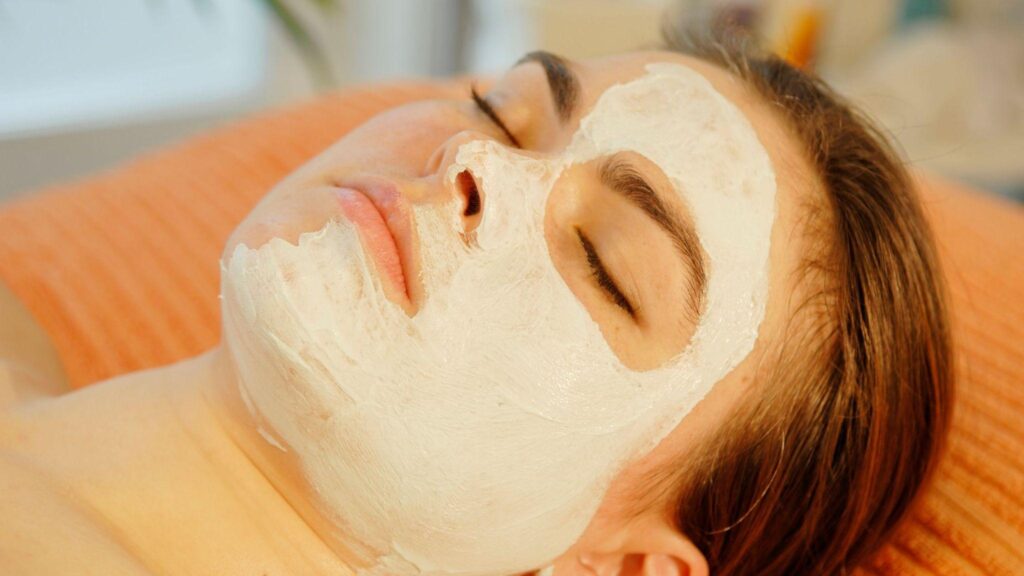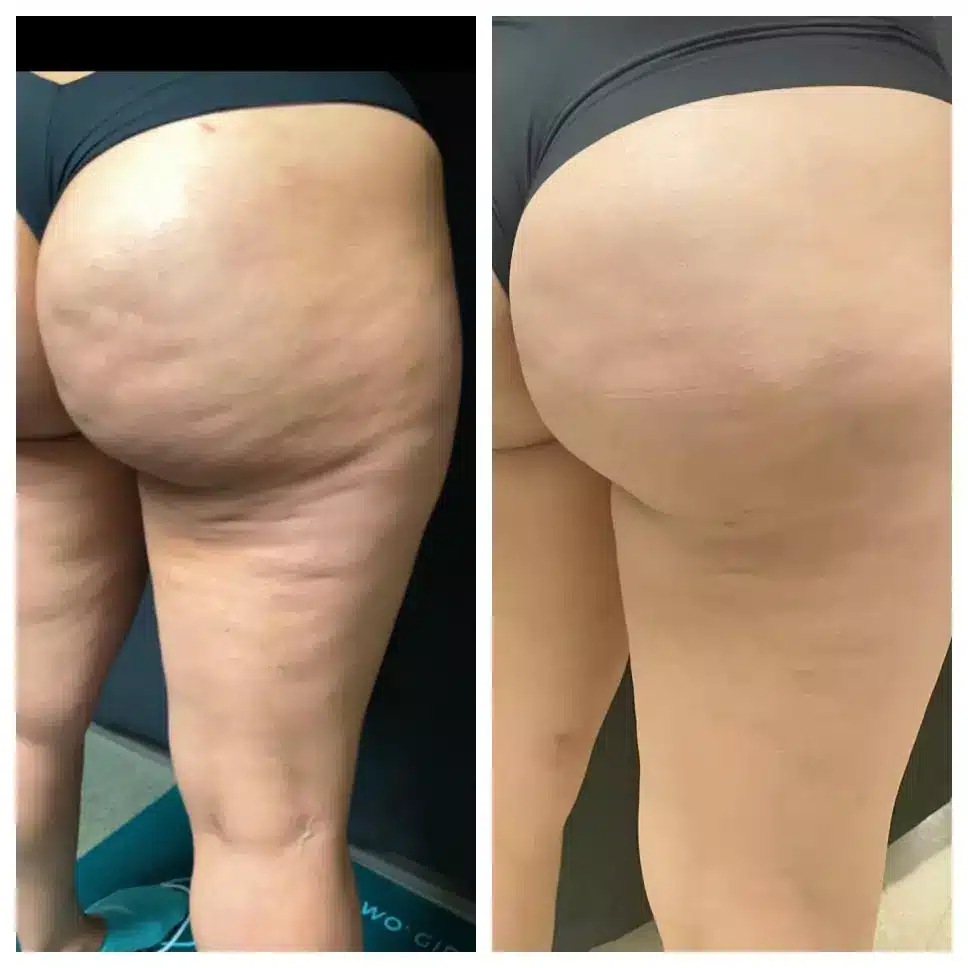Did you know that nearly 50% of women consider cosmetic procedures during pregnancy? However, when it comes to treatments like Fraxel, caution is key. Fraxel laser treatment during pregnancy: what to know about laser energy is crucial for expecting mothers at cosmetic laser centers. This laser treatment can help with skin issues but may pose risks while pregnant. Hormonal changes can affect skin sensitivity and healing.
It’s essential to consult with a healthcare provider before making any decisions. Understanding the potential impacts of laser treatment on both mom and baby using laser energy is vital. This post will explore the safety, effectiveness, and alternatives to Fraxel during pregnancy. Get informed to make the best choice for your skin and health.
Key Takeaways
- Fraxel treatments involve fractional lasers that can improve skin texture but may not be safe during pregnancy.
- Hormonal changes during pregnancy can make your skin more sensitive, increasing the risk of side effects from treatments like Fraxel.
- Expectant mothers should consult with their healthcare provider before considering any skin treatments to ensure safety for both mother and baby.
- If you are pregnant, consider alternative treatments that are safer and specifically designed for use during this time.
- Post-treatment care is crucial; follow your doctor’s advice on aftercare to promote healing and minimize risks.
- Timing is important; many recommend waiting until after pregnancy to undergo Fraxel treatments for optimal results without complications.
Understanding Fraxel and Fractional Lasers
Mechanism
Fractional lasers work by targeting specific areas of the skin. They create tiny columns of thermal damage in the skin while leaving surrounding tissue intact. This process helps to stimulate the body’s natural healing response. As the skin heals, it produces new collagen and elastin, improving texture and tone.
The selective laser therapy allows for precise treatment. It minimizes downtime and reduces side effects compared to traditional laser treatments. Patients often experience less discomfort and faster recovery times.
Dual Wavelengths
Fraxel Re:store Dual laser utilizes dual wavelengths. This feature enables it to treat both deep and superficial skin issues effectively. The 1550 nm wavelength focuses on deeper layers, addressing concerns like wrinkles and scars. The 1927 nm wavelength targets more superficial issues, such as pigmentation and sun damage.
This combination makes Fraxel a preferred laser treatment for various skin concerns. It allows dermatologists to customize treatments based on individual needs. Patients can achieve better results with fewer sessions.
Versatility
Fraxel lasers are versatile tools in dermatology. They address multiple skin concerns, including acne scars, pigmentation, and fine lines. Many patients seek these fractional laser therapies for their ability to improve overall skin quality.
For instance, those with acne scars often see significant improvement after just a few sessions. The laser stimulates collagen production, helping to fill in uneven areas. Similarly, individuals with pigmentation issues benefit from the targeted approach of fractional laser skin resurfacing treatments.
Moreover, these lasers can also treat sun damage and age spots effectively. Their precision allows for tailored treatments that suit diverse skin types and conditions.
Patients appreciate the minimal downtime associated with Fraxel treatments. Most can return to their normal activities within a few days after a session. This convenience makes fractional laser therapy an attractive option for many.
In summary, understanding how fractional carbon dioxide laser treatments function is essential for anyone considering this option. The mechanism behind these lasers promotes healing while minimizing discomfort. With dual wavelengths available in devices like Fraxel Re:store Dual, patients can expect comprehensive care tailored to their unique skin needs.
Safety of Fraxel During Pregnancy
General Recommendations
Fraxel treatments are generally not recommended for women who are pregnant. The reason is clear: there is insufficient safety data regarding the effects of laser treatments on both the mother and the developing fetus. Most healthcare providers advise against any cosmetic procedures during pregnancy due to potential risks.
Pregnancy brings significant changes to a woman’s body. Hormonal fluctuations can lead to increased skin sensitivity. This heightened sensitivity may result in an unpredictable reaction to laser treatments like Fraxel.
Consultation Importance
Consulting with a healthcare provider is crucial before considering any cosmetic procedure while pregnant. A doctor can provide personalized advice based on individual health conditions and pregnancy stages. They can also discuss safer alternatives for skin care that do not involve lasers.
Healthcare providers often emphasize caution. They understand that the priority during pregnancy is the health of both the mother and baby. Therefore, they may recommend postponing any non-essential procedures until after childbirth.
Potential Risks
Laser treatments, including Fraxel, carry potential risks during pregnancy. Increased skin sensitivity can lead to adverse reactions such as redness, swelling, or irritation. These reactions may be more pronounced in pregnant women due to hormonal changes.
Moreover, there is a lack of comprehensive studies on how laser treatments affect fetal development. The absence of data leaves many questions unanswered about long-term impacts. For this reason, it’s essential to approach these treatments with caution.
Alternative Options
Women seeking skin care solutions during pregnancy have several options. Non-invasive methods such as gentle cleansers, moisturizers, and sun protection are often recommended. Natural products can help maintain skin health without the risks associated with laser treatments.
Many doctors suggest focusing on a balanced diet and hydration. These factors can significantly contribute to skin health during pregnancy. Staying hydrated helps keep the skin supple and reduces dryness.
Emotional Considerations
Pregnancy can be an emotional time for many women. Concerns about appearance are common but should not overshadow health considerations. Prioritizing safety over cosmetic desires is vital for both the mother and child.
Hormonal Changes and Skin Sensitivity
Skin Sensitivity
Hormones play a significant role during pregnancy. They can cause increased skin sensitivity. This sensitivity can affect how the skin reacts to various treatments, including laser therapies like Fraxel.
Pregnant women may find that their skin reacts differently to heat energy from lasers. The body’s hormonal fluctuations can lead to heightened reactions. This might result in more redness or irritation than usual.
Common Skin Changes
Many women experience different skin conditions during pregnancy. One common issue is melasma, which leads to superficial pigmentation on the face. This condition results in dark patches, often on the cheeks or forehead.
Melasma occurs due to increased levels of estrogen and progesterone. These hormones stimulate pigment-producing cells in the skin. As a result, women may notice changes in their complexion. Other conditions include acne and freckles, which can also be influenced by hormonal changes.
Treatment Considerations
Considering cosmetic dermatology treatments during pregnancy requires caution. Pregnancy can alter skin types and conditions significantly. Women should monitor their skin closely for any reactions if they choose to undergo treatments.
Before deciding on any procedure, consulting with a dermatologist is essential. They can help assess individual skin types and conditions. A professional can provide guidance on safe options tailored to specific needs.
Laser treatments like Fraxel involve using different wavelengths of light. Each wavelength targets specific skin issues, such as scars or pigmentation. However, altered skin sensitivity may affect treatment outcomes.
Monitoring Reactions
Monitoring skin reactions is crucial if considering skincare treatments during pregnancy. Changes in the skin’s response can lead to unexpected results or complications. Pregnant women should be aware of how their skin feels after any treatment.
Signs of irritation include excessive redness, swelling, or discomfort. If these occur, it’s vital to seek medical advice promptly. Adjusting skincare routines may also be necessary based on how the skin responds.
Risks and Side Effects
Common Side Effects
Fraxel treatments can cause several side effects. Redness is one of the most common reactions. Swelling often occurs as well. Peeling skin may be noticeable a few days after the procedure. These side effects can be more intense during pregnancy. Hormonal changes increase skin sensitivity. Expectant mothers may find their skin reacts differently to treatments.
Increased Sensitivity
Pregnancy can heighten skin sensitivity. This means that even minor procedures could lead to significant irritation. The skin becomes more reactive due to hormonal fluctuations. Women might experience discomfort in areas previously treated without issue. Increased sensitivity can lead to unexpected problems with healing and recovery.
Prolonged Recovery Times
Recovery times can also be longer for pregnant women undergoing laser treatments. Expectant mothers might need additional days to heal fully. The body is already working hard to support the pregnancy, which can slow down the healing process. In some cases, complications may arise, leading to further delays.
Complications to Consider
Potential complications from Fraxel during pregnancy include infection and scarring. The risk of infection increases with any procedure that disrupts the skin’s surface. Scarring can occur if the skin does not heal properly. These risks are concerning for anyone but especially for pregnant individuals.
Downtime After Treatment
Downtime varies depending on the type of Fraxel treatment received. Some procedures require only a few days of recovery. Others may necessitate a week or more before returning to normal activities. Pregnant women should plan accordingly, considering their unique circumstances.
Results Expectations
Results from Fraxel treatments can take time to appear fully. Initial improvements may be visible within a week or two, but optimal results often require multiple sessions spaced weeks apart. For pregnant women, this timeline could extend due to slower recovery rates.
Areas of Concern
Specific areas on the body may react differently during treatment. The face is often treated, but other regions like the neck or chest may also be affected. Each area has its own characteristics and potential complications.
Energy Levels and Treatments
The energy levels used in laser treatments can impact outcomes as well. Higher energy settings might yield faster results but come with increased risks of side effects and complications. Lower energy settings are gentler but may require more sessions for desired results.
Precautions for Expectant Mothers
Avoiding Treatments
Expectant mothers should avoid Fraxel treatments during pregnancy. The skin undergoes significant changes during this time. Hormonal fluctuations can make the skin more sensitive. This increased sensitivity may lead to unexpected reactions to treatments. Risks associated with laser procedures include inflammation and discoloration. These effects can be more pronounced in pregnant women. Therefore, it is safer to postpone these treatments until after childbirth.
Gentle Alternatives
Many gentle, non-invasive skincare methods exist for pregnant women. Focus on maintaining a simple routine that supports skin health. Cleansing the skin daily with mild products helps remove impurities without irritation. Moisturizers with natural ingredients can hydrate the skin effectively. Look for products containing aloe vera or chamomile. These ingredients soothe and calm the skin.
Consider using vitamin C serums. They brighten the complexion and help with uneven skin tone. Always check labels to ensure products are safe for pregnancy. Consulting a dermatologist can also provide personalized recommendations.
Sun Protection Importance
Sun protection is crucial for maintaining healthy skin during pregnancy. Hormonal changes can increase the risk of developing pigmentation issues, such as melasma. This condition causes dark patches on the face and body. To prevent this, use broad-spectrum sunscreen daily, even on cloudy days.
Choose a sunscreen with an SPF of at least 30. Apply it generously to all exposed areas of skin. Reapply every two hours when outdoors, especially if sweating or swimming. Wearing protective clothing, such as hats and long sleeves, adds another layer of defense against harmful UV rays.
Hydration and Nutrition
Staying hydrated is essential for overall skin health during pregnancy. Drinking plenty of water helps maintain skin elasticity and appearance. Incorporate fruits and vegetables into your diet for added vitamins and minerals. Foods high in antioxidants support healthy skin from within.
Omega-3 fatty acids also benefit the skin by reducing inflammation. Include sources like fish, walnuts, and flaxseeds in meals. A balanced diet promotes healthy skin while providing essential nutrients for both mother and baby.
Emotional Well-being
Pregnancy can be an emotional journey filled with ups and downs. Stress management plays a vital role in maintaining skin health. Consider practicing relaxation techniques such as yoga or meditation. These methods help reduce stress levels and promote overall wellness.
Support from family and friends can also improve emotional well-being during pregnancy. Connecting with others who have similar experiences provides reassurance and comfort.
Timing and Treatment Considerations
Postponing Treatments
Expectant mothers should consider postponing Fraxel treatments until after pregnancy and breastfeeding. The safety of these procedures during this time is not well studied. Medical professionals often recommend waiting to ensure the health of both mother and baby.
Hormonal changes during pregnancy can affect skin conditions. These fluctuations may alter how the skin responds to treatments like Fraxel. This means results could be unpredictable. Healing times might also extend, leading to potential complications.
Hormonal Impact
Hormonal shifts can influence treatment effectiveness. For example, increased estrogen levels can cause skin sensitivity. This sensitivity may lead to adverse reactions post-treatment. Skin may react differently due to changing hormone levels.
These variations can make it hard to predict outcomes. Planning treatments around pregnancy timelines helps avoid these issues. Mothers should discuss their skincare goals with a dermatologist before conceiving. This ensures they understand the best timing for any procedures.
Planning Skincare
Planning skincare treatments is crucial for optimal results. Scheduling Fraxel or similar treatments before conception allows for better control over skin health. Women can address any concerns without the added variables of pregnancy.
It’s wise to create a skincare plan that aligns with pregnancy timelines. This includes considering when to start or stop certain products and treatments. Consulting with a qualified dermatologist can help outline a safe approach.
Women should also consider their long-term skincare goals. Some may want to wait until after breastfeeding to pursue more aggressive treatments. Others may prefer simpler skincare routines during this time.
Key Takeaways
- Postpone Fraxel treatments until after pregnancy.
- Hormonal fluctuations impact treatment effectiveness.
- Plan skincare around pregnancy timelines for best results.
Aftercare and Recovery Tips
Gentle Skincare
Following a Fraxel session, gentle skincare is crucial. The skin may feel sensitive or irritated. Use soothing moisturizers to help calm the skin. Look for products that contain ingredients like aloe vera or hyaluronic acid. These can provide hydration and relief.
High SPF sunscreen is essential after treatment. Sun exposure can worsen sensitivity. A broad-spectrum sunscreen with at least SPF 30 will protect the skin from harmful UV rays. Apply it generously every two hours when outdoors.
Avoid Irritation
Avoid activities that may irritate the skin. Exfoliating treatments should be skipped for at least a week post-session. This includes scrubs, peels, and other strong products. Heat can also aggravate the skin. Stay away from saunas, hot tubs, and intense workouts for several days.
Wearing tight clothing can cause friction on the treated area. Opt for loose-fitting clothes to reduce irritation. If you experience itching or redness, try to avoid scratching the area. Instead, use cold compresses to soothe discomfort.
Monitor Skin Reactions
Monitor your skin closely after treatment. Look for any unusual reactions like excessive redness, swelling, or blistering. These could indicate an adverse reaction. If these symptoms occur, contact a dermatologist immediately for advice.
A follow-up appointment with your dermatologist is often recommended after a Fraxel session. They can assess your recovery and address any concerns you might have. Keeping track of how your skin responds can help manage any issues early on.
Alternative Treatments for Pregnancy
Non-Invasive Options
Pregnant individuals often seek safe skincare treatments. Non-invasive options like facials can be beneficial. These treatments help cleanse and hydrate the skin without harsh chemicals. Estheticians can use gentle products that are free from harmful ingredients.
Topical treatments, such as moisturizers and sunscreens, are also important. Look for those labeled safe for pregnancy. Products with natural ingredients tend to be better choices. They provide hydration without irritating sensitive skin.

Natural Remedies
Natural remedies offer another way to address skin concerns during pregnancy. For example, aloe vera gel can soothe irritated skin. It is safe and effective for many people. Coconut oil is another option. It hydrates the skin and may help reduce stretch marks.
Diet plays a crucial role in skin health as well. Eating plenty of fruits and vegetables can improve overall skin appearance. Foods rich in vitamins C and E support skin repair. Staying hydrated by drinking water also helps maintain healthy skin.
Lifestyle Changes
Making lifestyle changes can further enhance skin health during pregnancy. Regular exercise increases blood flow, which benefits the skin. It also helps reduce stress, which can lead to breakouts or other issues.
Getting enough sleep is essential too. Sleep allows the body to repair itself, including the skin. Aim for at least 7-8 hours of rest each night.
Avoiding sun exposure is vital for protecting the skin during pregnancy. Use sunscreen daily, even on cloudy days. Choose a broad-spectrum sunscreen with an SPF of 30 or higher.
Skincare Routine
Maintaining a consistent skincare routine is important during this time. Pregnant individuals should focus on gentle cleansing and moisturizing. Avoid using products with retinoids or salicylic acid, as they may not be safe during pregnancy.
Consider consulting with a dermatologist about any specific concerns. They can recommend suitable products and treatments tailored to individual needs.
A simple skincare routine might include:
- Gentle cleanser
- Hydrating moisturizer
- Sunscreen
This routine helps manage common pregnancy-related skin changes such as dryness or acne.
Final Remarks
Navigating skincare during pregnancy can be tricky. Fraxel treatments may seem appealing, but safety is key. The hormonal shifts and skin sensitivity you experience can complicate things. Understanding the potential risks and exploring alternatives is crucial for your well-being.
Always consult with a trusted healthcare provider before making any decisions about cosmetic procedures. Your health and that of your baby come first. If you’re considering treatments, weigh your options carefully. Stay informed and prioritize safe practices to ensure a smooth journey through pregnancy. For more insights on skincare during this special time, keep researching and ask questions. Your skin deserves the best care possible!
Frequently Asked Questions
Is it safe to have Fraxel treatments during pregnancy?
No, it’s generally not recommended to undergo Fraxel treatments while pregnant. The safety of the procedure for both mother and fetus hasn’t been established.
What are the risks of Fraxel during pregnancy?
Potential risks include skin irritation, hormonal fluctuations, and unknown effects on fetal development. It’s best to avoid any non-essential treatments during this time.
How do hormonal changes affect skin sensitivity in pregnancy?
Hormonal changes can increase skin sensitivity and lead to conditions like melasma. This may heighten the risk of adverse reactions to laser treatments.
What precautions should expectant mothers take regarding skin care?
Expectant mothers should consult their healthcare provider before any treatment. Using gentle skincare products and sun protection is crucial during pregnancy.
When is the best time to consider Fraxel after giving birth?
Postpartum, it’s advisable to wait at least six months before considering Fraxel. This allows your body to stabilize and recover from childbirth.
Are there alternative treatments for skin concerns during pregnancy?
Yes, options like hydrating facials, gentle chemical peels, and natural remedies can be safer alternatives for treating skin issues during pregnancy.
What aftercare tips should I follow if I’ve had Fraxel recently?
If you’ve undergone Fraxel before pregnancy, keep your skin moisturized, avoid sun exposure, and follow your dermatologist’s aftercare instructions closely.










